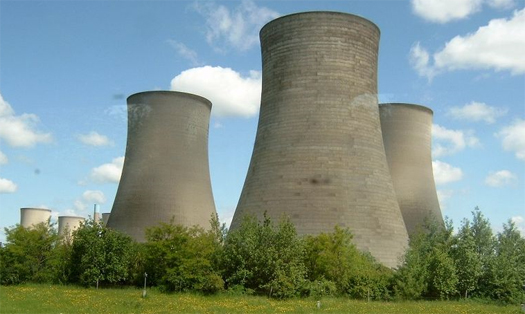An article in the most recent issue of the Atlantic Monthly explores aggressive “geo-engineering” projects:
“Humans have been aggressively transforming the planet for more than 200 years. The Nobel Prize–winning atmospheric scientist Paul Crutzen—one of the first cheerleaders for investigating the gas-the-planet strategy—recently argued that geologists should refer to the past two centuries as the “anthropocene” period. In that time, humans have reshaped about half of the Earth’s surface. We have dictated what plants grow and where. We’ve pocked and deformed the Earth’s crust with mines and wells, and we’ve commandeered a huge fraction of its freshwater supply for our own purposes. What is new is the idea that we might want to deform the Earth intentionally, as a way to engineer the planet either back into its pre-industrial state, or into some improved third state. Large-scale projects that aim to accomplish this go by the name “geo-engineering,” and they constitute some of the most innovative and dangerous ideas being considered today to combat climate change. Some scientists see geo-engineering as a last-ditch option to prevent us from cooking the planet to death. Others fear that it could have unforeseen—and possibly catastrophic—consequences. What many agree on, however, is that the technology necessary to reshape the climate is so powerful, and so easily implemented, that the world must decide how to govern its use before the wrong nation—or even the wrong individual—starts to change the climate all on its own.”

A permanent fleet of ships sails the globe, churning the ocean with special propellers to spray seawater into the air and make clouds whiter and fluffier. A battery of twenty electromagnetic guns, “each more than a mile long and positioned at high altitudes”, that would fire tens of millions of ceramic frisbees at the gravitational midpoint between the earth and the sun, putting “the Earth in a permanent state of annular eclipse”. Hovering zeppelins spew sulfur dioxide into the air, turning the sky red at sunset. Forests of Freeman Dyson’s genetically engineered trees hungrily suck carbon out of the air. Vented structures, similar to industrial cooling towers, are filled with grids coated in a solution that captures carbon; the captured carbon is then scrubbed off the grids and sequestered deep below ground in exhausted oil wells. Antarctic waters are seeded with iron, producing massive plankton blooms that cool the globe.

Perhaps the most unexpected (and frightening) turn in the Atlantic article is the suggestion of a worst-case scenario in which a “rich madman… obsessed with the environment” or “a single rogue nation” sets one of these plans into motion unilaterally, with potentially disastorous global side-effects — in the case of the sulfur aerosols, for instance, it is quite likely that any interruption of the supply of aerosols would produce immediate and catastrophically rapid climate change. An appropriately sobering possibility to consider, for though the scenarios seem outlandish(ly exciting) and the risks are real, they are being given hearing not just at the fringes of scientific debate, but at bodies like the National Academy of Sciences.


Great post. There’s a story over at FLYP as well about geo-engineering and the potential problems/benefits. It all seems like humans getting too big for their britches… http://www.flypmedia.com/issues/30/#5/1
That’s a quality article, as well.